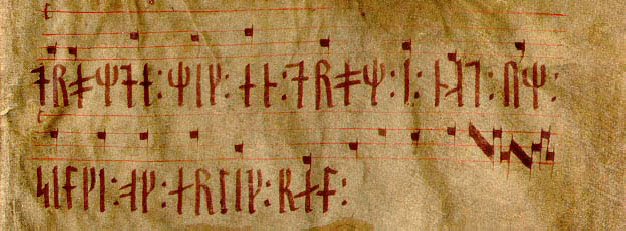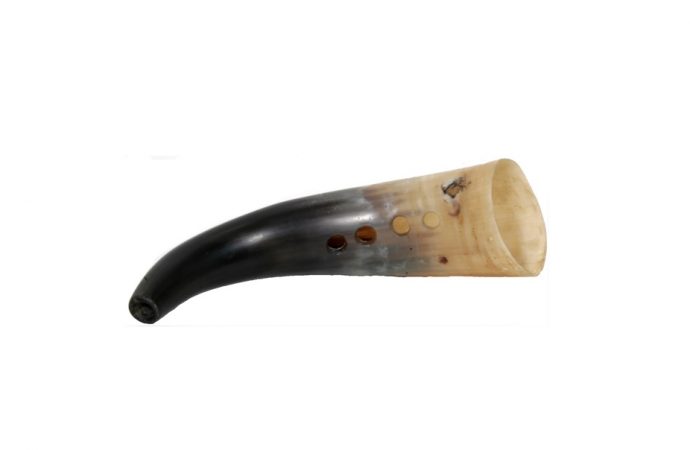Did the Vikings have music?
The Germanic Scandinavians of the Viking Age (c. 793-1066), often called “Vikings” for the part of their population that went seafaring abroad, did not leave any written records of their music. But does this mean that they did not have music?
Evidence of Viking Music in the Archaeological Record
Archaeological excavations have unearthed numerous musical instruments from the Viking Age, which can be categorized as woodwind, brass, string, and percussion instruments. Examples of these instruments include long, tubular lur horns; bone flutes found in Birka, Sweden; panpipes from the Coppergate excavation; a cow horn found in Västerby, Sweden; rattles in the Oseberg ship in Norway; and lyres such as the Anglo-Saxon Sutton Hoo lyre found in the UK.
From the various locations where these instruments were buried, it can be gathered that music and musical instruments were likely played on a variety of occasions and served multiple functions, such as for religious, entertainment, and perhaps trading purposes.
Viking Music in the Literary Record
As the Scandinavian people did not have a flourishing writing culture during the Viking Age, it is necessary to consult foreign sources for contemporary accounts. Runes during this time were not used for extensive writing; rather, they were used for simple records.
While the Scandinavians themselves left few clues as to how their music may have sounded, contemporary accounts in Arabic, Greek, and Latin survive. Arab writers such as at-Tartushi and ibn Fadlān describe qualities and contexts for Germanic singing: that it sounded like “a humming coming from their throats,” and was used during funerary rites, respectively. Byzantine sources describe Gothic dances and detail the tendency of the Scandinavians abroad to adhere strongly to tradition.
Translation provided by Rawia Azzahrawi, Professor of Arabic Language, the University of Manitoba in Noel Braucher, Throat Singing in Old Norse Culture? (the University of Manitoba. March 1, 2016).
Finally, there is a multitude of Latin sources, from pre-Christian Roman writers to Christian monks that detail what kind of subjects that the Germanic tribes sang, and what types of instruments they played. From all of these foreign sources, we know that at least one type of Norse vocal music sounded legato with different pitches, Scandinavian music tended to be conservative, and Germanic tribes sang about their own history and chanted before the battle.
Although Old Norse literature that mentions music were written by the Scandinavians themselves, as these were all recorded decades and usually centuries after the Viking Age, accuracy is a problem. Such sources include runes, the Poetic and Prose Eddas, sagas, and others, and these typically describe when, where, and about what Viking Age music consisted of. Old Norse literature indicates that there were many different genres of music, including military songs, domestic songs, and those for entertainment. Like archaeology, it supports the hypothesis that music was performed for different contexts, with different instruments.
Reconstructing the music of the Vikings
By studying archaeological records, literary accounts, and medieval music theories, it is possible to sketch the outline of Viking Age Scandinavian music. Archaeology demonstrates the diversity of instruments, while later Old Norse literary accounts describe the circumstances wherein music was performed.

However, to have a better understanding of what Viking music actually sounded like, it is necessary to turn towards music theories and reconstruct melodies. To do this, we can look at early melodies and continuing Scandinavian artistic traditions that may have traces of earlier music, and compare and contrast these melodies. Furthermore, unlike the Vikings, Arab, Byzantine, and Latin writers did describe and record their own music, and we also know from their startling accounts that Scandinavian music did not resemble theirs. Thus, by eliminating what it did not resemble, we can guess what Viking music did not sound like, and delete this from the hypothesis. While it may be impossible to reconstruct the music of the Vikings with 100% accuracy, it is possible to come up with a close approximation.
Two important early melodies are recorded in Codex Runicus and Codex Upsaliensis C 233 – examples of medieval Scandinavian manuscripts-, the former of which is the only example of music written with runes (c. 1300). The melody recorded in the latter, “Nobilis, humilis”, is notable for being polyphonic; meaning that it has multiple melodic lines, here two lines in parallel thirds. Gymel is a type of polyphonic music from Northern England, and according to Giraldus Cambrensis (c. 1146–1223 CE), it is thought to have had Scandinavian influence, as polyphonic music was uncommon in native English music. Icelandic folk music recorded by Jean-Baptiste de la Borde in 1780 include songs such as those that are set to words from the Eddic poems Völuspá and Hávamál, and one about the Viking chieftain Haraldr Hardráða functions perfectly when a second vocal line is added in parallel thirds.
Medieval Ballads
Continuing traditions include Norwegian Medieval Ballads, which may contain musical elements from medieval times. The categories of these ballads, which include legend, chivalric, and nature mythical ballads, may indicate the genres of songs that were sung during the Viking Age. Other traditions that may contain clues are the Icelandic rímur and tvísöngur. Rímur is an extremely conservative form of oral poetry that uses alliteration and rhyme, and contains kennings, heiti and other characteristics of skaldic poetry, while tvísöngur is a type of singing wherein two lines of melody are sung polyphonically, typically in parallel fifths. From these early melodic forms, we can gather that early Scandinavian music included polyphony—most likely parallel thirds and fifths—and that there were probably many different genres of music and songs.
Finally, we can eliminate known musical forms from the unknown to at least postulate what the Vikings’ music did not sound like. We know from various written records how Arabic music from Baghdad and al-Andalus, Byzantine court music, and Western Continental European hymns sounded; we also know from these peoples that the music of the Viking raiders and traders did not resemble their own. Therefore, it can be assumed that Germanic music from the Viking Age did not contain, for instance, the major, minor, and neutral thirds and microtones that are highly prevalent in Arabic music.
In a nutshell
Of course, all of this must be taken with a grain of salt. No matter what methods are used to reconstruct the music of the Vikings, unless one had a time machine, it is impossible to say for certain how it sounded. However, by combining archaeological, literary, and musical evidence, it is possible to propose a highly educated hypothesis.
What is possible to say, is that the Vikings had plenty of music.
References:
Noel Braucher, Throat Singing in Old Norse Culture? (University of Manitoba. March 1, 2016).
Constantine VII, De Ceremoniis, Book I, ch. 83; Book II, ch. 52.
Anna Komnene, Alexiad, ch. 9.
Tacitus, de Origine et Situ Germanorum Liber. Edited by Henry Furneaux. (Oxford: Clarendon Press, 1900), III:1-2.
Read the full dissertation here.
[su_box title=”Share your Science” style=”glass” title_color=”#ffffff”] The Share your Science section aims at giving students and researchers a space to share their thesis to a broader audience. UA Magazine wants to increase the visibility of recent academic work and serve as a bridge between universities and societies. [/su_box]





